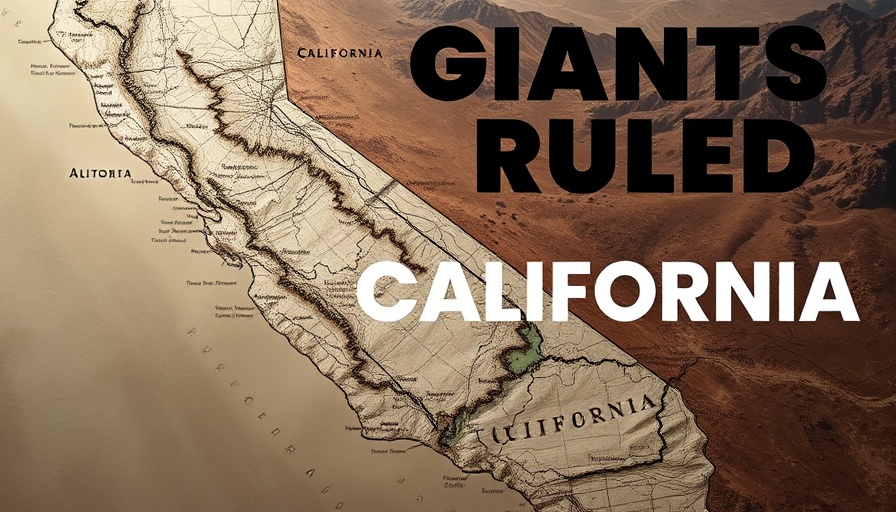
The Forgotten Neighborhoods of San Diego: A Historical Overview
San Diego, a vibrant city known for its breathtaking beaches and cultural diversity, carries with it a hidden history often overlooked. What if we told you that beneath the bustling streets of Mission Valley and Little Italy lie stories of resilience, community, and the struggle for identity? In the 1950s, this very landscape was filled with corner stores, backyard gardens, and children playing in the streets. Today, they have been replaced by highways and warehouses, but the memories of those neighborhoods remain deeply etched in the city’s fabric.
In 'San Diego's Forgotten Neighborhoods: What Was Erased from the Map', the discussion dives into the complex history and transformations of the city's neighborhoods, exploring key insights that sparked deeper analysis on our end.
The Cultural Melting Pot of Early San Diego
Before the concrete jungles and asphalt roads, San Diego was shaped by a rich blend of cultures. Indigenous communities, particularly the Kumi people, created a harmonious relationship with the landscape, thriving in areas near rivers and coastal plains. However, the arrival of Spanish explorers in the late 18th century marked the beginning of significant cultural disruptions, displacing indigenous populations and transforming the land through violent assimilation strategies.
As centuries passed, new cultures emerged from the shadows of colonization. By the early 1900s, neighborhoods like Logan Heights and Sherman Heights were vibrant with life, built by Mexican-American families and other immigrant groups. The streets were alive with the aromas of diverse foods and the sounds of various languages, showcasing a resilience that would define these communities.
Segregation and Resilience in the Face of Urbanization
The narrative took a drastic turn during the mid-20th century when war industries prompted a population boom. As San Diego expanded to accommodate new workers, systematic segregation manifested through restrictive housing policies. Communities of color were pushed into southeast neighborhoods, their aspirations curtailed by redlining and other discriminatory practices.
In stark contrast, cultural hubs like the lively Harlem of the West flourished momentarily, enhancing the city’s rich African American heritage. Yet, these vibrant districts soon faced decay as urban planners orchestrated a new vision for progress, prioritizing freeways and commercial development over the homes and businesses of long-standing communities.
Urban Development and Its Cost
From the 1950s to the 70s, neighborhoods were transformed at an alarming rate, often turned into parking lots or industrial spaces. Entire communities were wiped out to pave the way for infrastructure projects like Interstate 5, creating physical and social divides that still resonate today. For instance, Bario Logan, once a creative cultural hub, found itself under the shadow of a bridge, shifting from community spaces to mere roadways.
Despite these challenges, communities like Bario Logan fought back. In 1970, residents began to reclaim their space, transforming what could have been a parking lot into Chuco Park, a vibrant testament to their cultural identity and resilience. Their determination birthed murals and green spaces, a stark reminder of what was lost but also what could be reclaimed.
Contemporary Reflections: The Legacy of San Diego’s Lost Neighborhoods
As San Diego continues to modernize, the battle between redevelopment and historical preservation persists. New projects, like the proposed expansion of Seaport Village, ignite conversations about accessibility and the preservation of the city’s character. City Heights showcases this ongoing dialogue, where immigrant communities strive for visibility and voice while navigating the challenges of modernization.
The preservation of these neighborhoods is not merely about maintaining old buildings; it’s about honoring the stories, cultures, and identities that shaped them. Recognizing the significance of lost neighborhoods can alter our understanding of San Diego, inviting us to appreciate the complex narratives often smoothed over by rapid urban development.
Call to Action: Rediscovering San Diego’s History
Understanding the history and evolution of communities helps us draft a future that respects diversity and inclusivity. We encourage you to explore the neighborhoods of San Diego, engage with local histories, and visit places like Chuco Park where past and present intertwine. By rediscovering these lost neighborhoods, we make the choice to honor their stories and the people who fought to preserve their legacies.
 Add Row
Add Row  Add
Add 




Write A Comment